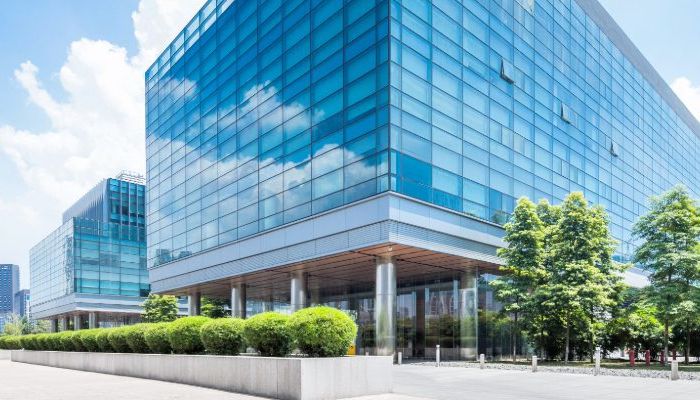In today’s changing workplace, facility managers face more pressure to do more with less. They must manage costs, boost productivity, and keep buildings safe, sustainable, and suitable for their purpose. One of the most impactful ways to achieve these goals is through effective building utilization.
This guide explains what building utilization means. It discusses why it is important for facility managers. It also shows how to use data, technology, and best practices to improve performance and space efficiency.
What Is Building Utilization?
Building utilization also known as space utilization, means how much a building’s space is used compared to how much it can hold. It’s typically expressed as a percentage:
Building Utilization Rate = (Actual Occupancy ÷ Total Capacity) × 100
This metric goes beyond simple occupancy counts. It looks at how often and how well space is used. This includes meeting rooms, workstations, collaboration areas, and amenity spaces.
For facility managers, building utilization is a clear way to measure efficiency. It helps them make decisions about space planning, leasing, and workplace design.
Why Building Utilization Is Critical for Facility Managers
In a hybrid work environment, occupancy is changing and employees have new needs. Facility professionals need to manage space wisely. Here are the core benefits of optimizing building utilization:
1. Operational Cost Savings
Unused or poorly used space still incurs costs—rent, utilities, cleaning, and maintenance. Identifying underutilized areas allows facility teams to right-size the real estate footprint, reduce overhead, and reallocate resources more efficiently.
2. Strategic Space Planning
With granular utilization data, facility managers can make data-driven decisions about office layouts, renovations, consolidations, or even lease terminations. This strategic foresight is vital for long-term planning, especially in multi-location or global portfolios.
3. Improved Employee Experience
Space impacts behavior. A workplace that supports a variety of activities—focused work, collaboration, social connection—enhances employee satisfaction and productivity. Aligning space allocation with actual needs ensures your environment evolves with how people work.
4. Sustainability and ESG Goals
Efficient use of buildings contributes directly to sustainability targets. By optimizing usage, you can reduce energy consumption, waste, and emissions—key metrics in your organization’s ESG reporting.
5. Scalability and Flexibility
Facility managers must be ready to adapt quickly to shifting workforce trends. A clear understanding of how space is used enables faster responses to headcount changes, new technologies, or policy shifts like hybrid work models.
Key Metrics for Building Utilization
Facility leaders should track multiple data points to get a holistic picture of utilization:
- Daily/Weekly Occupancy Rates
- Desk Utilization (Assigned vs. Unassigned Seating)
- Meeting Room Usage and Booking-to-Actual Ratios
- Space Per Employee
- Cost Per Occupied Square Foot
With tools like space utilization sensors and workplace analytics platforms, facility managers can gather real-time, location-specific data to support smarter decisions.
Strategies to Improve Building Utilization
1. Leverage Workplace Analytics Tools
Invest in a space management platform that captures real-time data on occupancy trends. These tools provide visual dashboards and AI-powered insights that help you identify patterns, bottlenecks, and inefficiencies.
2. Adopt Activity-Based Working (ABW)
Move away from static, assigned workspaces and introduce flexible environments designed for specific tasks. ABW supports a range of workstyles and can drastically improve how space is used.
3. Implement Smart Scheduling and Booking Systems
Ensure shared resources like meeting rooms and desks are used effectively with booking systems that provide visibility and prevent double-booking or ghost reservations.
4. Use Space Audits to Drive Change
Conduct regular space audits, both manually and with sensors, to validate space usage assumptions and uncover hidden opportunities for repurposing or reallocating areas.
5. Involve Stakeholders Early
Bring HR, IT, department heads, and even employees into the conversation. Collaborative space planning ensures utilization strategies meet functional needs and cultural expectations.
Frequently Asked Questions (FAQs)
What’s the difference between occupancy and building utilization?
Occupancy refers to how many people are physically present in a space. Building utilization examines how often and how well people use those spaces. A room can be used but not fully if it is made for 12 people and only has 2 in it often.
What tools are used to measure building utilization?
Facility managers use occupancy sensors, badge swipe data, booking systems, and workplace analytics tools. They measure how spaces are used in detail.
How often should I measure utilization?
Ideally, you should monitor utilization continuously via automated systems, but at a minimum, you should conduct audits quarterly. Continuous monitoring allows for trend analysis and proactive planning.
Can optimizing building utilization help with compliance?
Yes. In highly regulated industries, space allocation can have implications for safety, privacy, and compliance. Having a clear utilization strategy helps you meet codes, social distancing requirements, and other regulations.
What are common signs of poor building utilization?
Empty meeting rooms, low attendance in open spaces, and many complaints about workspace layout are all warning signs.
Building Utilization Is a Strategic Advantage
For facility management professionals, building utilization is more than just a number. It is a key tool for adding value to your organization. From reducing waste to enhancing the employee experience and supporting sustainability goals, effective space utilization empowers facility teams to drive measurable impact.
No matter if you manage one building or many around the world, the secret is using data and smart space planning together. The result? A workplace that’s leaner, greener, and better aligned with the people who use it.










